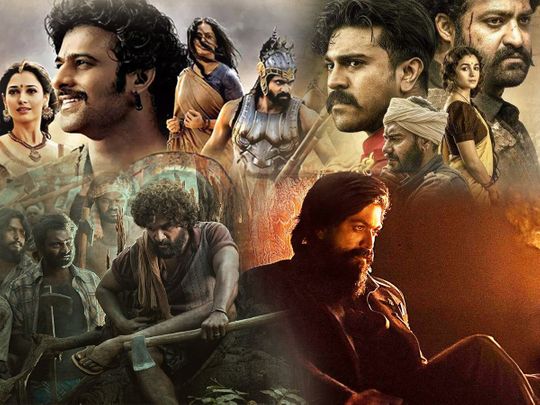
Can dubbed versions of ‘Pushpa’, ‘RRR’, ‘KGF 2’ put curtains on South-Bollywood divide?

“Pushpa, I hate tears.” Bollywood matinee idol of yesteryear late Rajesh Khanna’s famous words for his on-screen lady love, played by Sharmila Tagore, in the 1972 classic Amar Prem is as much a part of the Hindi film industry’s folklore as it is emblematic of an era when romance was king on either side of the Vindhyas – though, unfortunately, the South-Bollywood divide in Indian filmdom was all too pronounced. Romance, action, comedy, period flicks … they all were in vogue in both, the Hindi film industry, as typified by the term ‘Bollywood’, and the so-called “South Indian films”, as type-cast through nomenclatures such as ‘Kollywood’, ‘Tollywood’, ‘Mollywood’ etc. And it took 49 summers since Rajesh Khanna’s "Pushpa" for yet another Pushpa of a whole new genre to highlight a yearning for an unprecedented obliteration of the North-South divide on India’s entertainment topography.
Kannada superstar Yash (Naveen Kumar Gowda), the lead actor in the runaway pan-India hit KGF: Chapter 2 (2022), summed it up quite succinctly, saying: “If I make a film in Mumbai today, it’s no longer a Hindi film, it’s an Indian film.”
Bollywood, watch out – competition is closer than you think!
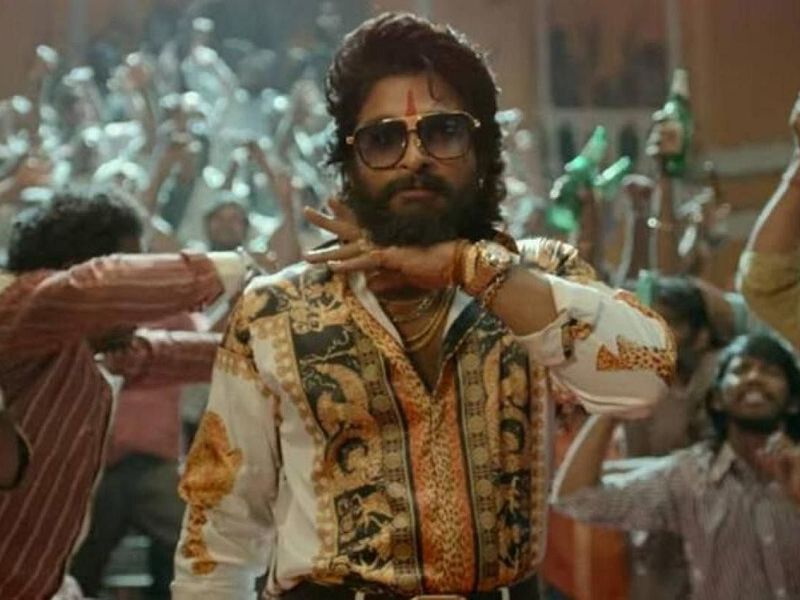
Director Sukumar’s Telugu offering Pushpa: The Rise (2021), featuring superstar Allu Arjun in the lead, was released to a pan-India audience in December 2021. Till date, the film has grossed a whopping Rs3.65 billion (Dh17.46 million).
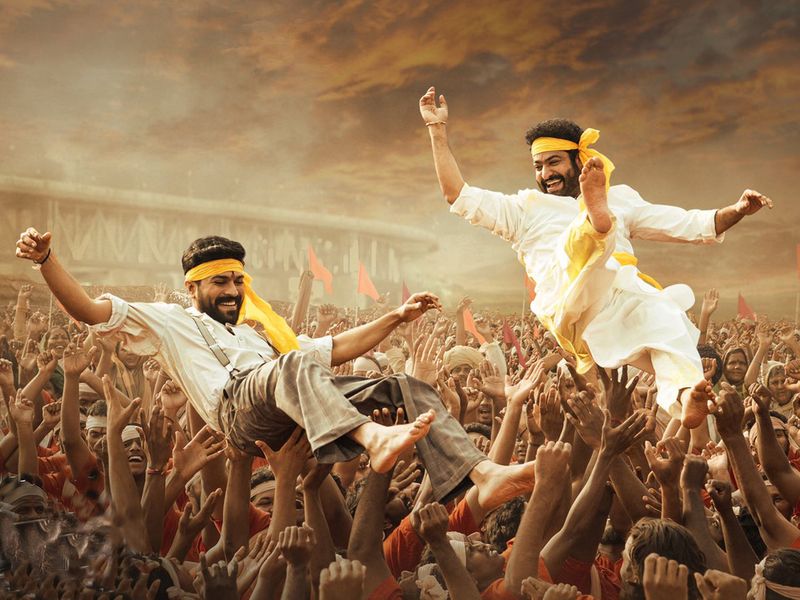
This was followed by another Telugu offering, RRR (2022), by legendary director S.S. Rajamouli and featuring an ensemble cast that included South heavyweights Ram Charan Teja and NTR Junior brushing shoulders with Bollywood stars Ajay Devgn and Alia Bhatt. The film went on to gross a mind-boggling Rs10 billion. Then came director Prashanth Neel’s Kannada film KGF: Chapter 2, starring yet another ensemble cast comprising Yash, Srinidhi Shetty and Prakash Raj from down South and biggies Raveena Tandon and Sanjay Dutt from Bollywood. The film is still in the theatres, having already earned Rs8 billion. By the Eid holidays, it is expected to cross the Box Office collections of Aamir Khan-starrer Dangal, the second-highest Bollywood grosser ever. And as Tamil mega star Rajinikanth would say, “Mind It!” – none of these recent blockbusters were Hindi ‘remakes’ of South Indian super hits. They were all dubbed in multiple languages, including Hindi, and released and distributed simultaneously all over India.
It is not for nothing that #DeathOfRemakes is trending on Twitter. There was a point of time, not too long ago, when commercially successful films from the South of the Vindhyas were ‘remade’ in Hindi, with a re-packaging of the cast with popular Bollywood names. The Hindi film industry is replete with such examples of rehashing of a hit ‘formula’. And then there was this tendency to rope in a very popular name from down South and project him in a supporting role in a Bollywood ‘remake’. In the process, quite ironically, the character who was supposed to play second-fiddle to the Bollywood lead ended up as the more endearing character, a more long-lasting imprint on the viewer’s consciousness, than their Bollywood counterparts. Two examples that come straight to the mind are T. Rama Rao’s Andhaa Kaanoon (1983), where the inimitable Rajinikanth matches vibes, frame for frame, with the towering on-screen persona of Amitabh Bachhan, and Ramesh Sippy's Saagar (1985), where Kamal Haasan actually steals many a march over Rishi Kapoor, the male lead.
In that sense, what we are seeing right now is something truly unprecedented because all these films that have struck a gold mine in theatres pan-India, are dubbed Hindi versions of the original Telugu or Kannada offerings and not ‘remakes’. Bollywood filmmaker Ram Gopal Varma, in fact, has stirred up a hornet’s nest by tweeting about this new phenomenon of dubbed hits from the South sending cash boxes ringing all across India. In a tweet, Varma said: “If Nani’s original Jersey from Telugu was dubbed and released [in Hindi], it would have cost the producers just 10 lakhs [Rs1 million]. Whereas the remake in Hindi cost 100 cr [Rs1 billion], losing enormous money, time, effort and face.”
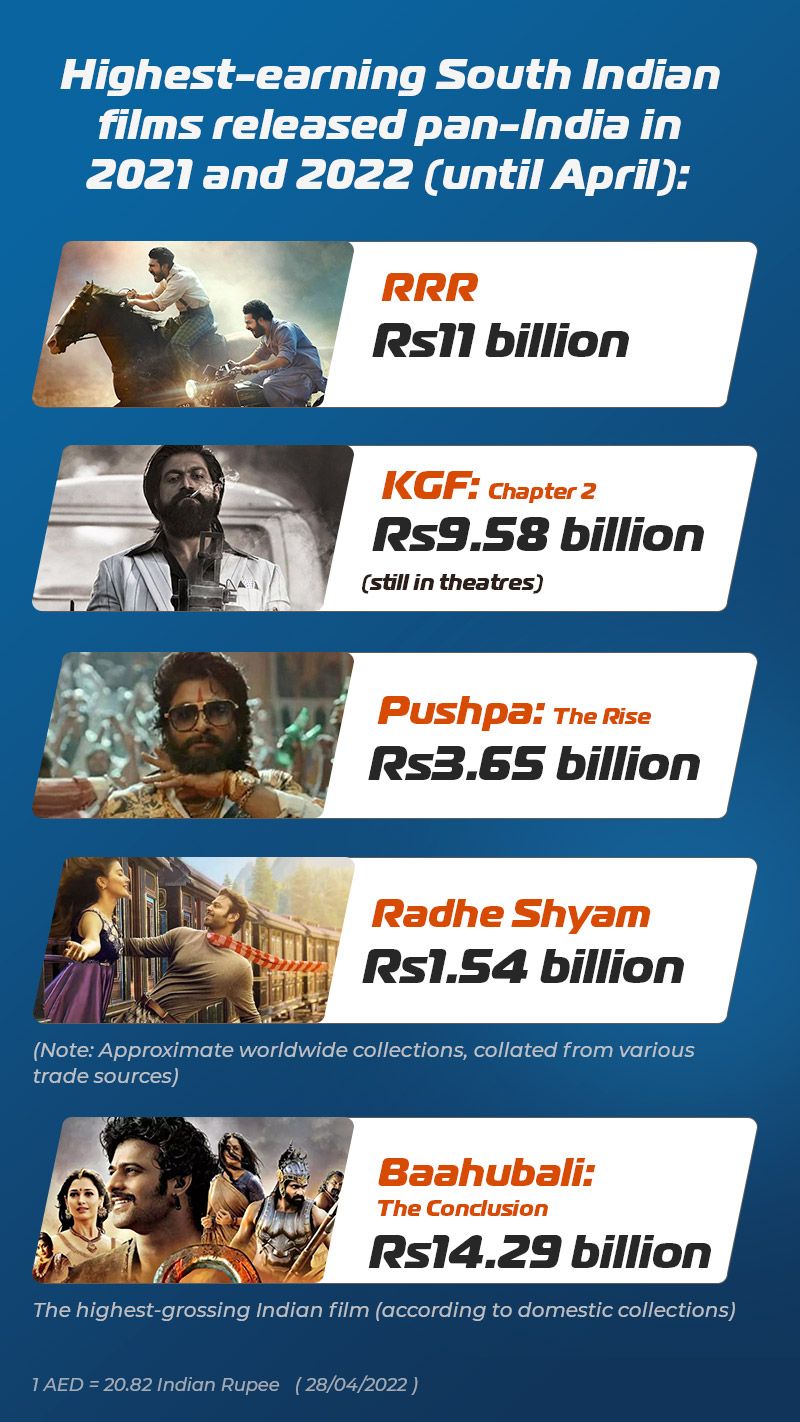
The question that obviously arises here is: Why now?
To understand this, let’s go back by about five years. The trend really started with the release of S.S. Rajamouli’s magnum opus Baahubali: The Beginning (2015) and Baahubali: The Conclusion (2017), that gave big-screen entertainment a whole new dimension. These were films that presented a story from a never-never land that let one’s imagination run wild and see and savour life on every square inch of the 70mm silverscreen perhaps like never before. The ground for what we are seeing right now was prepared by Rajamouli’s Baahubali duology that really whet our appetite for more of the same brand of larger-than-life entertainers that demanded to be presented and soaked up on the big screen.
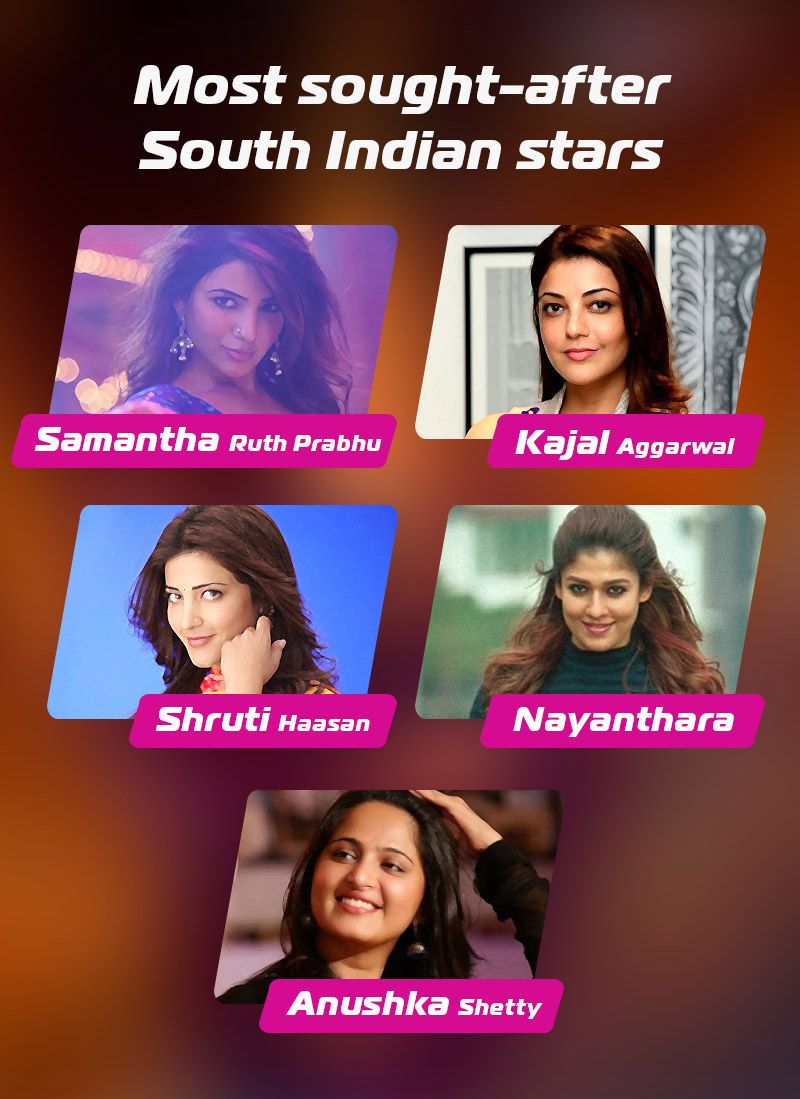
But then came the pandemic and we all were forced to live our lives within the four walls of our homes. The home soon became an extension of our workspace and the living room sofa and the television were soon transformed into a window on the world. As the images on nightly prime time news channels kept pouring out a never-ending, depressing and gut-wrenching saga of a virus wreaking havoc on mankind, we were constantly forced to look more and more inwards for relief – either the phone or the laptop or at best the wall-hung LED/LCD screen in the living room or bedroom became our only source of entertainment. Our ‘worlds’ became more and more constricted and tunnel-vision was more the norm than the exception. With that, there was this pent-up hunger to break free, to once again be back in the darkroom comforts and mysticism of the big-screen world. The hunger grew. The desire to return to normality grew.

The OTT platforms played their role, too, in this quagmire of desolation and despondence – holding out a ray of hope in the form of choice and alternatives at a time when going out for a movie was a sure-fire invitation to mortal damage. The OTT allowed filmmakers to experiment with casting-coup of sorts and with myriads of rather revolutionary content. One series that stands out in this regard is Family Man Season 2 (2021), where both the female leads, Samantha Ruth Prabhu and Priyamani, are established names from the South, who brush shoulders with the male lead, played by Manoj Bajpayee, a Bollywood star in his own right, over nine episodes that turn the conventional notion of a spy thriller on its head. With such a mixed, North-South cast, Family Man Season 2 made a massive audience outreach that defied geography and filmography in an Indian context, projecting itself as a wholesome, pan-India entertainer – without the baggage of a ‘wood’ tagged to it!
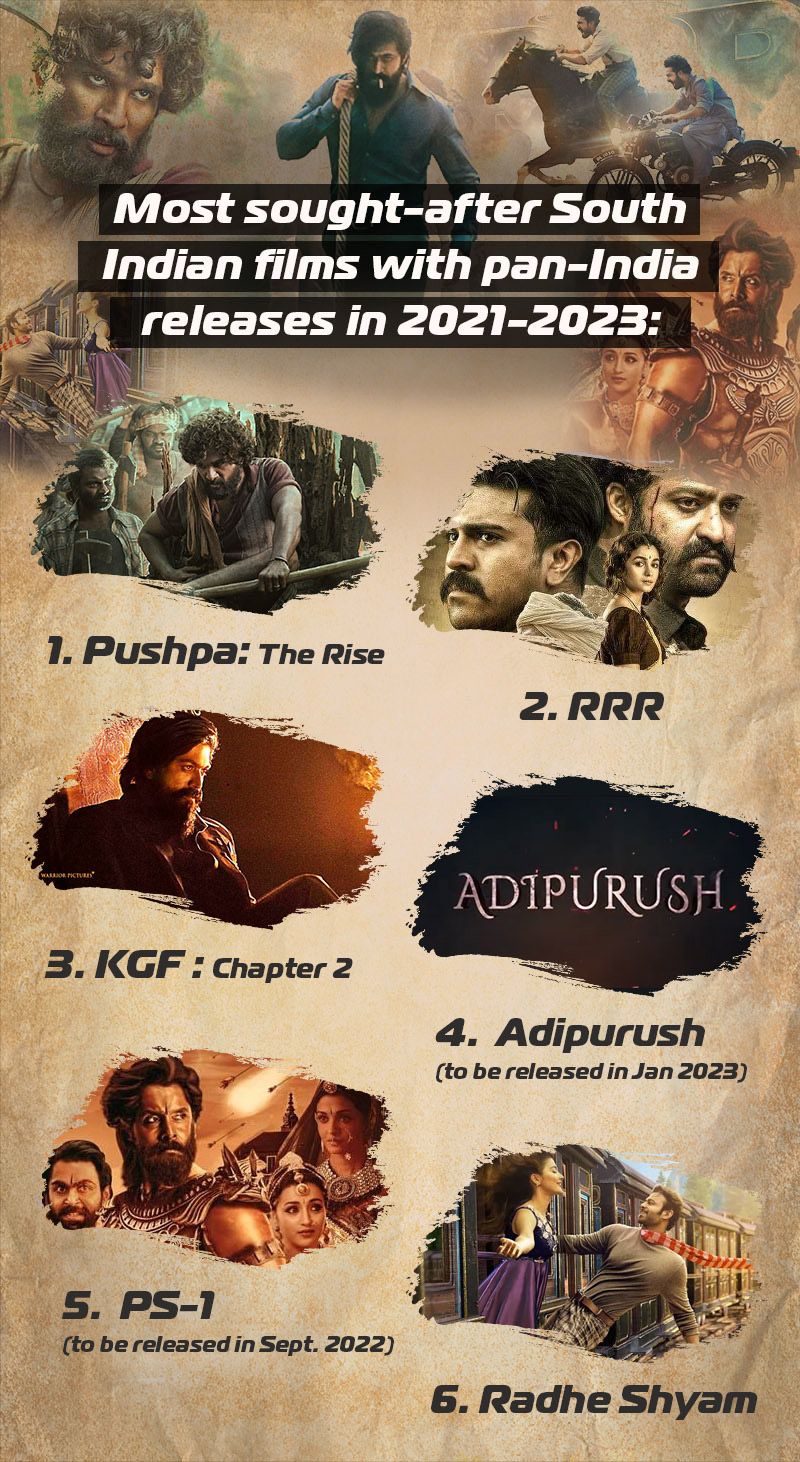
In this scenario, the easing of lockdowns and restrictions saw a much-awaited opening of the floodgates. And in came a barrage of some extremely well-crafted, well-scripted, well-enacted big-screen offerings from down South that showed oodles of confidence, common sense and business acumen not to go the ‘remake’ way, but ambush the Hindi film market by straight away unleashing mega entertainers on screens across India in their dubbed Hindi avatars. The pandemic and the proliferation of OTT platforms had already sown the seeds for a craving for big-budget movies.
That is why the release of these big-screen potboilers immediately struck a chord with audiences across India, who were just looking for one good-enough excuse to step out of their homes and get hold of the newfound normality – any which way. For these audiences, it didn’t really matter whether the film they paid for was hatched in Tollywood or Kollywood or Mollywood or Bollywood. All that mattered was some wholesome entertainment presented in an easy-to-grasp format. In that sense, all these recent hits, whether it is Pushpa, RRR or KGF 2, had one thing in common: They all told a story that found a ready resonance with the man on the street and they were all honest attempts at presenting entertainers with the soul of a rustic saga – shorn of predispositions, shorn of any needless obsession with ‘form’ and ‘substance’.
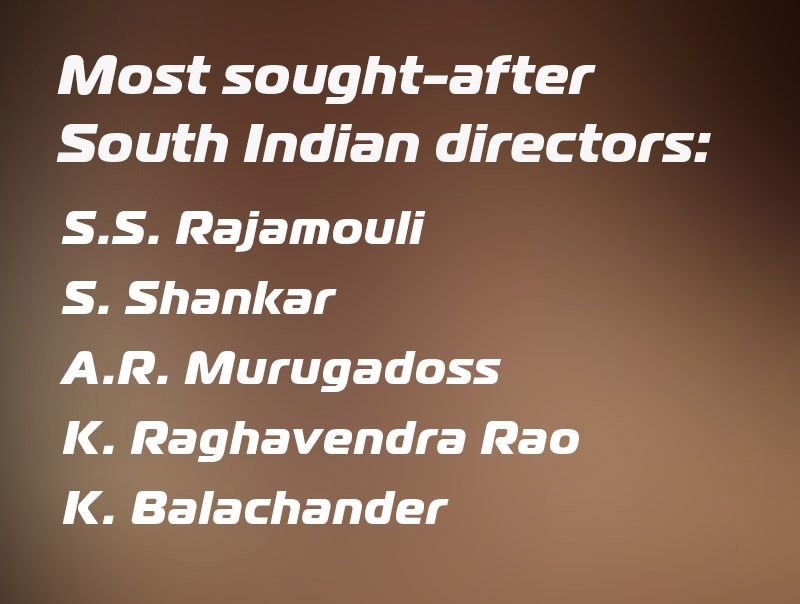
The fact that there were no big-budget Bollywood releases to match these southern offerings around the same time, further helped Pushpa, RRR and KGF 2 prosper.
And yes, there seems to be just no room for tearjerkers for the moment. Pushpa, we indeed hate tears!